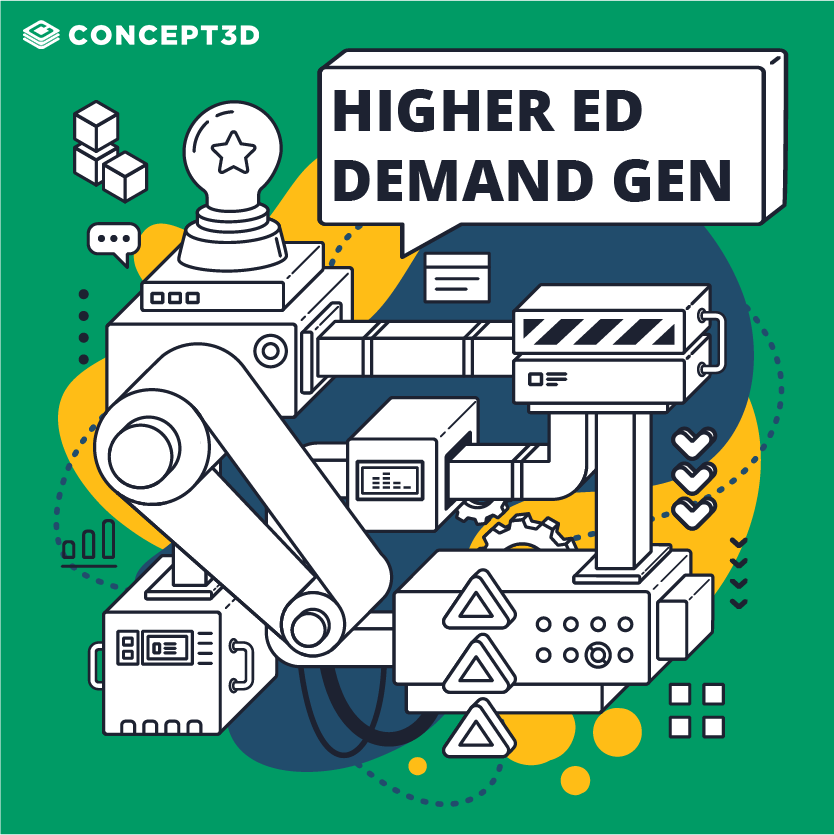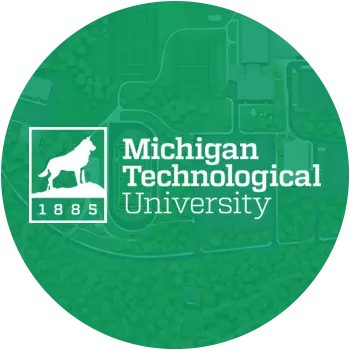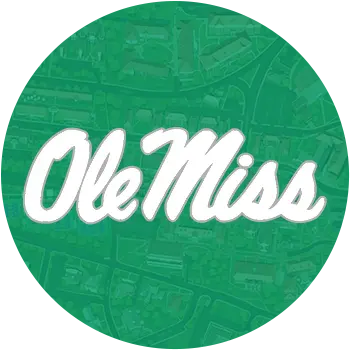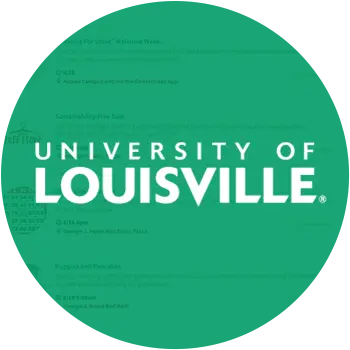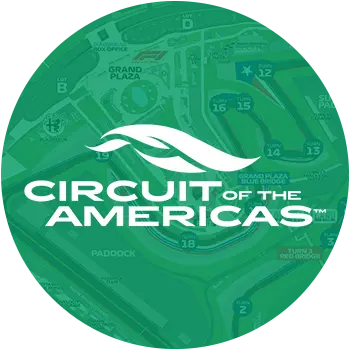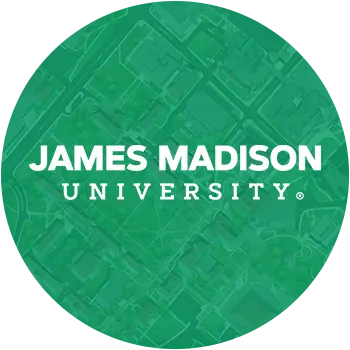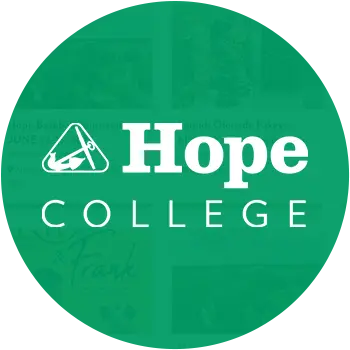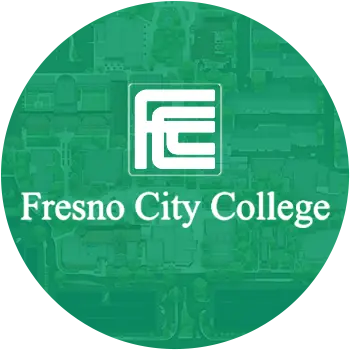Read the transcription
Shiro Hatori
Hello, everyone. Welcome to the higher ed demand gen podcast hosted by content 3d. My name is Shiro. And today I’m very thrilled to talk about the future role of the CMO, especially in higher ed, and what we’ve learned from 108 institutions strategic plans. So for this topic today, I’m super excited to also introduce our guest, Rob sinkin. Rob serves as the Vice President for Marketing leadership at our HP. And if you didn’t know, RSP is one of the top higher ed consultancies out there, specifying in a lot of areas all somewhat related to marketing. He also has a long history of serving at Indiana University. So please welcome Rob to the podcast.
Rob Zinkan
Shiro thanks so much. Looking forward to the conversation. appreciate the invitation. And congrats. By the way on the podcast, you’ve had a big 2022 23 academic year, what are you 5050 Plus episodes in now?
Shiro Hatori
50 Plus episodes, yeah. Thanks so much, Rob. appreciate the recognition. Well, yeah, let’s jump in. So if you’ve listened to the episode, I you know, I love asking this question. So Rob, what do you love about higher? Ed?
Rob Zinkan
It’s a great question, because that’s why we’re in the sector we’re in and we do what we do. So I would, I would say, number one mission, is there a more important and compelling mission, then then higher ed, in terms of unlocking opportunity, improving people’s lives, transforming their lives, not just improving them, but transforming lives, and advancing society. And then number two more specifically, would be the students. And you mentioned my long history with Indiana University the last four years at our HB. So I had always been on a university campus. And now with our HB higher ed firm, I’ve missed being on a campus. And so I teach as an adjunct three courses a year at two different universities, a master’s program in strategic communications and a doctoral program in Higher Ed Leadership. So going alongside students in that journey. It’s it’s a remarkable gift seeing their growth and development. And I think I always get more out of it than they do. And their online courses. We just had a live session, though, Monday night, and I was telling the students, how much inspiration I draw from them. And again, seeing their growth. So the students, it’s, it’s fantastic.
Shiro Hatori
That’s amazing in before 2019. What was your teaching journey? Like before that was this new to you?
Rob Zinkan
It was new. It had been many years since I taught I think last time I taught a course was an undergraduate sports marketing course, right after my master’s degree program. Okay. So it’s been it’s been great. It’s been really fulfilling.
Shiro Hatori
That’s amazing. That’s glad. I’m really glad to hear that. Well, let’s, let’s jump in. Right. And so I know you have tons of experience, I could probably ask you about anything with regards of higher ed, marketing and higher admissions. But, you know, one really interesting thing that you’ve done over at rhp, as of recent is, you conducted a research of around 108, higher ed, strategic plans. This is from different universities, right. And you were able to analyze and do some more research on what really made this strategic plan, a good plan. Right. And so could you share some of the findings from it as well?
Rob Zinkan
Sure, it was so fascinating to do this, and doing this research with me, Dr. Amy Hosemann, who’s our Director of qualitative research at our HP and we had a graduate assistant speaking of Indiana University from the Lilly Family School of Philanthropy, Connor Lagrange. And yeah, we’ve looked at 108 strategic plans, 2400 pages of strategic plans. So some light reading there. You know, we slept well, in the evening, if we were if someone was looking at a strategic plan for your institutions, and tried to get a public and private institution from each state. And then from those plans, we identified 16 that we considered the most strategic or they exhibited the most strategic tendencies, and then had the pleasure of interviewing leaders from many of those institutions ranging from the president or chancellor to the Chair of their strategic planning committee or even their chief strategy officer. And a couple of general themes I could touch on to to get the conversation started, that we saw one would be a lack of strategy, and that’s the title of the white paper that you read. And we have a book that we even publish from the study here that I’m showing on camera, what makes a strategic plan strategic and so understanding strategy as well. As an intervention, that it should be something that requires behavior change. And so something for listeners, as you look at your strategic plan to ask yourself are these things that we should be doing already. And knowing that a list of ambitions or goals is not necessarily strategy that a strategic plan should reflect a set of choices about how an institution should move forward? So one example Cheryl, we saw plans that had as many as 20, overarching strategic goals. And so that’s, that doesn’t necessarily reflect choices. You know, if everything’s a priority, what truly is a priority? And how do I know what that behavior change should be? So that key point about strategy should be an exercise in making choices. And then the other general observation or takeaway from from this study, would be a lack of, of student centeredness, and the the internal nature of strategic planning that plans are created for an institution by an institution? And Connor, our graduate research assistant was so valuable because he was the first one to have that lightbulb moment that he said, Where am I? And these plans, where am I represented in these plans. And so plans that did exhibit the most strategic tendencies, they discussed students, student Well, being students success more frequently than others. And they also involve students in the process. So undergraduate students, graduate students, were members of task force’s or working groups, they had a meaningful role. And it wasn’t just one student, like, Okay, we’re gonna check the box and have a student representative, they would have multiple students as part of committees and working groups. And that’s hard work. Again, that that can be where strategic planning can get messy and having lots of different voices, but it’s an integral part of the process. So those two things, the lack of strategy, and lack of student centeredness, were two of those key things that we walked away with from looking at 108 plans.
Shiro Hatori
And pointing out the lack of strategy that you just mentioned. You know, one thing I heard was, you know, there’s too many, often too many goals associated or too many ambitions. And did you find that the 16, that really stood out actually had fewer of those goals and that they weren’t narrowed down and more focused on building out the strategy aspect versus just the ambition aspect? Yeah,
Rob Zinkan
we did. On average, the across all plans, they were there, five and a half goals, on average, among this set of 16, it was typically in the three to five range, okay. And it does get to this issue of in strategic planning that you want to have an inclusive and participatory process. Everyone has a voice and is engaged. But does everyone have a vote? You know, again, if strategy reflects a set of choices, you want to hear all voices, you want to engage. But ultimately, you have to you have to make some decisions along the way. And, and one of the roles that marketing can help is the communication around those decisions. And it was fascinating to see how institutions exhibited transparency and their strategic planning process, and how they, you know, how they bridged that great degree of participation within yeah, getting to three or five key goals versus trying to, you know, please, everyone, or or have a have, you know, a plan that tries to do everything. So one, one quick example, we had a small college and talk to their president, they were one of the 16. And the President, they shared iterations of the strategic plan with changes tracked. I mean, it was that granular in terms of being transparent. And I’m not saying that everyone should do that, again, that gets to extra effort, and the messiness that is part of strategic planning, but it’s an example of one way that worked for them that fit their culture. That was a great way to show, okay, you should know what, what changed or how this process is evolving or how our thinking is evolving, because it’s all right. It’s all right here. So again, not necessarily for everyone, but I admired that approach. As a way to Yes, we heard everyone and here’s, here’s what we’re doing is this process evolves, and we’re getting down to what ultimately the strategic objectives are going to be for the institution.
Shiro Hatori
Yeah, this is really interesting. I like that you point out this is a smaller institution of the 16 that you found that had those solid, strategic plans. Not all of them were the same, like school size, right? They were. So their goals were different, but their strategy was aligned to their goal. Is that right?
Rob Zinkan
Yeah, yeah, for sure. We had a mix of large publics to small privates to religious affiliated institutions. It was a It was a good it was a good mix of institutions both across the larger set, and then the set that had the the more strategic strategic plans.
Shiro Hatori
Very interesting. And I know that the findings were not all specifically for marketing. But let’s talk a little bit more about the marketing, takeaways or findings. Based on the condensed size of the condensed report that you sent me. One takeaway was, you saw that there’s a lot of opportunities for the marketing function to be further develop beyond just promotion, I think is what it said. Can you tell us a little bit more about what you mean there?
Rob Zinkan
Sure, that was one of the items we were most interested in is what would a review and analysis of 100 plus strategic plans across higher ed reveal about higher ed marketing about the function of marketing, and just as you said, the focus was clearly around promotion, once we did a content analysis of all the mentions, and about half the plans had specific or explicit mentions of marketing. And so then doing that content analysis, seeing, you know, promotion, expressed in a variety of ways of things like vigorously promote, or boldly promote, or promote our image or, you know, promotion promotion promotion. And so the things that that might indicate a more strategic role for marketing, whether that’s, you know, understanding the audience’s understanding your constituents, helping to understand market conditions for program development, revenue, diversification, any number of areas were less were much less prevalent, it was actually a bit disheartening to see how marketing was, was represented in these plans, because marketing has made a lot of forward movement and progress in terms of cmo VP level roles. But according to these strategic plans, there’s a lot of work left to do. But it does speak to the opportunity. You know, again, we did see a few exceptions to that, particularly among the 16, where marketing was collaborating with academic affairs and finance. And there was an market intelligence based approach to program development. And it was much more than just promotion. So that was one one clear takeaway about marketing and the role of marketing and plans. But along with that, is the role of the CMO or the leader for marketing as part of the part of the plans. And, again, a great opportunity for marketing to be at the table. So back to that point of transparency, fewer than half of the plans, identified who all was involved in the planning in terms of core, core strategic planning committee and working groups and all of that. But then for those who did a small number had Marketing and Communications, I think 15 or 17, had a marketing and communications leader as part of the core strategic planning group. So if if marketing role is to get the word out, around promotion, or make the strategic plan look pretty, okay, you know that that makes sense. But if you’re wanting marketing as we think it should be, can serve an institution and its ambitions around more strategic areas in terms of understanding audiences in terms of understanding market conditions. There’s so much opportunity and so it’s it’s a, it’s a miss, like marketing leaders can be fundamental agents, in creating that engagement with the people who matter most to an institution and its and its future. And so that constituents centric perspective, that can take into account all the various stakeholder groups who are part of a strategic plan in terms of taking action or being influenced. Marketing can bring that expertise to the table. And so again, it’s a missed opportunity when marketing is not represented. So those were a couple things related to marketing. Branding is another area which I could touch on as well, what we saw there,
Shiro Hatori
amazing. And it can you give us like an example of you know, what is an audience centric perspective look like? Maybe you don’t have to name the institution. Or you can provide one example of what that looks like. I’m trying to just contextualize this and visualize this in my head.
Rob Zinkan
Yeah, yeah. And I think it goes back to the very beginning of of knowing that as you’re developing a plan, like who’s the strategic planning ultimately, for that was one of our main research questions, as we, you know, encountered strategic plans anyway, through the course of our work, and they all kind of look the same and sound alike thinking, well, who are these are these ultimately for who’s supposed to read them and act on them? And so going through that process of identifying your audiences or prioritizing audiences for a strategic plan can be really helpful, and also inviting audiences to see their own agency And moving the university forward having that conveyed in a strategic plan. And so, you know, an example of simply would be plants that were easy to read or even enjoyable to read, because they were designed with readers in mind. And that’s one. One characteristic of good strategy is that it should be easy, simple and even obvious, to communicate and to to understand. So we saw, unfortunately saw more examples that that weren’t necessarily audience centric and even hard to follow priority goal initiative tactic, and how do all these dots connect, for example, became became cumbersome, it shouldn’t be cumbersome, it shouldn’t be all owners to read and understand a strategic plan. And again, I think it gets back to let’s let’s think of this not just in terms of the institution, but in terms of our audiences. And, and again, marketing can be very valuable in that one other disconnect that comes to mind was, we, we identified the most common, overarching priorities or strategic goals. So diversity, equity, inclusion, and belonging was one research was was another and scholarship creative activity. But community outreach, broadly defined was one of those top priorities that we saw, most consistently across plans. But then digging into well, who’s participating in the strategic planning process, and only 10%, of strategic planning committees included any community representation. So another example of that disconnect for institutions that look and act in a more inward fashion for strategic planning? Yet our missions are about what you know, when you ask that first question about why love higher ed about transforming lives and society, they’re outwardly focused. So that’s such an interesting disconnect, in this plan. And so again, you know, we we know, we need to be audience centric in our marketing work, but need to be audience centric in our strategy, too.
Shiro Hatori
And, you know, this is actually reminding me a lot of, I don’t get the opportunity to talk to people who formulate strategic plans or review them like you very often. But this actually reminds me a lot of, I’ve had a lot of higher ed, website redesign conversations on the podcast. And I’ll talk to people either directly supporting or directly managing full website redesign. And the thing I’m hearing is, you know, you don’t want to just go out there and create the website and expect everyone else to follow suit, right, and kind of going with your 10% of people are involved in the process of creating these strategic strategic plans. A lot of the successful newer higher ed websites, talk to every college or every unit of the school to see, hey, like, is this page being developed in the way that you’re, you’re seeing opportunity? Or where do you see frustrations, and they’re really getting this community built approach to the website. And I found that a lot of folks are really moving toward this model, because one, they can condense the website into a few amount of pages. And, you know, create a plan that’s actually easier to understand, like you just said, but also have involvement from all the departments that want to say in the website, and so that everyone’s kind of on board with the plan. And it’s kind of it’s connecting the dots and sounds very similar to that, obviously, much higher level. But
Rob Zinkan
no, I love that connection, a clear, a clear parallel. And, and I think the thing that I take away from that, as you you mentioned that example, going back to your question about promotion, and seeing that that heavy focus across these strategic plans. And, you know, that’s not the that’s not the role that marketing can can best play to serve an institution at our core is our role to represent or champion, our constituents and those who were engaging those who are trying to reach and influence and move to action, those who are closest to the to the institution, like when we represent those audiences, and can bring their perspectives, worldviews, experiences to the table to help guide decision making. That’s, you know, that’s the role of marketing. That’s the beauty of what marketing can do that external understanding of both our audiences. And then back to the point with strategic planning, market conditions and external forces. That was another gap that we saw in the strategic plans is that so few strategic plans did any sort of environmental scanning or serving of audiences. We saw this pattern emerge that when strategic plans were introduced, there would be This broad overview of all of these conditions, you know, all the headwinds that we’re familiar with, across the higher end landscape, whether that’s the changing demographics, or the scrutiny that’s heightened of higher ed, all those issues we would hear about and see. And that that’s helpful. But it didn’t get to the specificity of those beyond that general overview of how do these, how do these factors, whether they’re cultural, social, economic, how do they specifically affect this institution? And the road ahead? And what are what are our perceptions of our audiences and stakeholders? What are the what are the market forces at play in our service region. So we didn’t see a lot of that to really understand the specific and nuanced ways that those different factors can affect a particular institution. So again, that speaks to an opportunity where marketing can add add value. And so that, again, those broad that broad overview helped to make a case for change. But there’s there’s much more opportunity there, when you get into specific data and insights from market research that that marketing can help bring to the table and help understand current market position. That was another takeaway, that there was a lot of assumption about institutions and their their distinctiveness, and where they stand in the market. But it wasn’t clear in strategic plans, we didn’t see a clear across the set a clear understanding and explanation of where an institution currently is where they want to go, their vision, their goals, all of that they’re great about saying, Here’s what we want to do, we want to grow, and we want to start these programs. But truly understanding a starting point where you are, is essential, obviously, to know how to draw a map to get there. And that current understanding, again, another area, I keep harping on it, that marketing can bring that type of intelligence to institutional decision making
Shiro Hatori
of that. Yeah, I mean, if my manager might listen to this later, but you know, we’re all about creating, like rocks, which are basically like, our milestones are sorry, not our milestones, they are our goals, like a strategic plan for the individual contributor. And then we create milestones along the way to see, you know, where we’re at in that process. And so, yeah, I think that’s really fundamental to understanding like how far you’ve gone, or how far you’ve come so far. To hear it possible, I’d love to switch gears a little bit more. And before we do, I do want to mention that we will be sharing rhps resources out in the podcast description footnotes, as well as the web page will create for this episode. So that you’ll have an opportunity to read more about what Rob and his team have been able to find from these learnings. So we’ll share that out for you and be on the lookout for that. So jumping right back into the conversation here. Well, you mentioned this lightly before, but what are your thoughts around the future role of the CMO and marketing as a whole in higher ed?
Rob Zinkan
The question there, Shiro, we did touch on it as it relates to strategic planning. And if I can back up and give you a current state of the of the marketing function, and that’s one of the things that we do at our HB is we help institutions with organizational effectiveness related to marketing, and conduct organizational assessments. And what we see, we typically see institutions in either two camps, one of which would be marketing function that is very much output oriented, which would be in that promotion, they, you know, telling our story at service function taking requests and, and and that sort of approach. And then the next area would be a more strategic function, where there are metrics associated with how marketing is affecting resources for the institution revenue reputation, rather than based on just activity. That work is aligned with key institutional priorities. There’s typically a VP level position dedicated to marketing, resources toward marketing are seen more as an investment rather than a cost. Marketing is not a cost center that we that we sometimes see and that more service support, type of function, the marketing enables revenue generation enables reputation enhancement, so those those two broadly defined areas. And we’re seeing institutions often in the middle because there’s always, always an executional element to marketing. So sometimes it’s hard to evolve an institution realizes when Need marketing to play a more strategic function or strategic role for the institution? And we’re not exactly sure how to get there. But then beyond that, because you asked the question about the future, like, where could marketing go. And it’s great when we see where marketing’s work is aligned with strategic priorities. Getting back to our discussion around strategic plans, there’s an opportunity if marketing does and can do those things to bring that information that data, those insights, marketing can help guide those priorities, they can inform those priorities, they can help the institution decide what strategies to take, versus just aligning our work with priorities, they can inform the work. And that’s a that’s a critical difference. I talked about that as marketing as a Chief Strategy Officer type of role and to think of marketing in that way. So that would be that would be one area as we look to the future of marketing. The other area and I wrote a piece about this in Inside Higher Ed about a year or so ago about the chief constituent officer, which is not necessarily a title, it’s more of a conceptual thought about how marketing can represent a broader range of stakeholders. And it gets back to your point about an integrated constituent journey for our audiences, because we’re, we’re divided organizationally across our institutions into these functional silos. But our our audiences look at the institution holistically, like we’re all, you know, wherever you’re, wherever your alma mater is, like everyone, you know, they don’t look at the office of so and so it’s the university, you know, it’s one university. And so no one is responsible for thinking or strategizing in that way. And increasingly, constituents relationships with the institution, are are multi dimensional, they don’t just fit into one box or one area, like they have lots of points of connection, which is great with an institution. So who is who is taking that global view, connecting the dots with the institution, you know, we don’t talk much about student lifetime value. But but those who do I encourage them to think of student lifetime value, also in terms of the value to the constituent, what is the value to them, not just to the institution about being engaged in the life of the institution for their, for their lifetime. And so that opportunity for higher ed, particularly as we get into CRM, and and, you know, one CRM, not multiple CRMs, across Admissions and Student and advancement, but an integrated CRM or one CRM. And slate CRM is something that we do at our HB. So that’s a huge, huge opportunity. I presented at the AMA symposium for the marketing higher education last year with Mary Gresh, senior vice president at the University of Washington, and venti Harvey, VP, at Scripps College, because they are two, Marketing and Communications leaders who now lead marketing and advancement. So they have an integrated portfolio. And you see that and higher ed, but that’s typically led by someone who comes from a development background. But this is these are places that are being led by those with a marketing and communications background with oversight of advancement. And again, it’s not it’s not it’s not a power play or anything like that, it’s an indication of the value that marketing can bring, because of this constituent wide lens and understanding and this institution wide lens and understanding so I’m really excited about seeing a few examples like that. And I think our institutions are going to be more need to be more and more innovative. And in that way, and not just think in terms of organizational structures that have always existed. So I’m, I’ll stop there, but it gets me excited thinking about the possibilities for for marketing leadership in the role,
Shiro Hatori
I have a question to you know, ask Why Why does you know why did why did these process all need to be I liked your example about you know, your two colleagues or who are combining advancement and marketing now right or communications together? Why is this need coming up? Is it because consumers now and students and potential students are now used to a society in which like, journeys are perfected by other experiences in their life like this is very theoretical, right? But like, why is this need come up? You know, like, there’s higher it’s been doing the same thing for 3040 50 years. Why is this need have to come up now?
Rob Zinkan
Oh, wow. There’s There’s probably a lot that we could get into there. And I think I’ve put yours, you know, the reason that you just stated at the top of the list because our expectations as as customers, as consumers are changing, and you’re right, higher ed, we should be comparing ourselves or our institutions to the experiences that our constituents have with other brands, you know, who are, you know, it’s seamless in terms of, you know, interfacing with technology, and, and, you know, heck, my Starbucks app, I mean, you can name any, any, any of those types of examples. But then if I can make the connection back to the strategic plans, one of those top priorities that we saw most consistently was revenue diversification, or financial sustainability. And advancement plays a role in that. And it was interesting to see the difference. And we saw it not to get too far into mentions of philanthropy and advancement. But it was very common to see that mentioned in specifically in financial sustainability and in a transactional sort of way. But we did see pockets of examples where it was a much more holistic approach of engagement, and all the ways that we want our constituents to, again, be part of the life of the institution, or be engaged in the institution, or the, or the ways that we as an institution should bring value to the constituents throughout their lifetime throughout that journey. And by doing so, that’s going to lead to increased engagement and increase giving. And so the financial piece of that, I think, is part of the part of the picture, too, because it serves an institution well, over the long run. But that’s the thing is, it’s a long game. And it’s really hard to play the long game, when, you know, there are all these pressures, and we’ve got to fill the, you know, the incoming class for next year. And again, I think that’s, that’s a great opportunity for marketers, is to bring that long, like that long view perspective that institutions need
Shiro Hatori
love to hear in one. One area I’m focusing on right now, as a content subject for concept 3d is around student onboarding. So what we’re defining student onboarding, as is your period from after you’ve committed right to actually showing up to school on moving day, the moving day itself, plus the first week or one month of orientation, and maybe that first, you know, two to three months of the student of the first year students journey and kind of looking at that whole experience as a student onboarding process, and how, you know, institutions are starting to really, I think, invest more resources for from a people perspective, from a money perspective, so that students have a really good initial experience. And so that, you know, they can retain those students more, and they can advance to the second year, third year and become, you know, loyal alum alums, as well. And so that’s a conversation I’m having. The flip side of that is to talk about those three areas, pre pre moving day, moving day, and orientation, and First Year Experience. Those are all managed by like three to four different departments. And so you can already see that the decentralization of that experience for the student, because if I was a student, whatever communications I’m receiving over summer, before, showing up the dorms to that first series is going to be, you know, looked at as one single journey or close to one journey. But it’s already fragmented, I think, from a department perspective at the institutional level.
Rob Zinkan
Yeah, yeah. Good. I’m that’s high value work. So I’d love to hear more about that, because it does it. And it’s an encouragement to listeners and their institutions about the work that they do. And I’m sure there are comparable examples that they have is, how can you operate? How can you functionally organize your work around the student or the constituent and less like your organizational chart? You know, your work doesn’t have to look like your organizational chart? How do you know if you were to organize around those that you’re trying to serve? What would that what would that look like in your right to it’s the transition points that get, get the rockiest are there they’re the most obstacles there. And I would always say that that transition from student to alum would be one of those where, as a from a constituent perspective, it’s almost as if someone has to reintroduce themselves to the university, right? They’re going to typically new information system, new staff, new all of that. And so is is that experience, their interests, all of that carried over to where that’s just a seamless integration, and even looking ahead to where you might have, what graduate programs that are on a subscription model are all the different ways that higher ed will change and were just for yours is not enough. And we may be going in and out to get credentials or to get more education. And that relationship between being a student being alum is, you know, is is less defined. So you know, another example of why we need to be more integrated and the way we think and the way we work. That’s, that’s more tied to those we’re serving and less tied to, and of all the organizational silos that are inherent in higher ed.
Shiro Hatori
Love that. And I think I want to pull a quote from this that what was it you said that your work does not have to be tied to the departments that it’s divided between or something along those lines? Right, right. Yes.
Rob Zinkan
Yeah. I mean, we’re all we’re all you know, we we’ve shown during COVID, all the ways that we can collaborate, and work cross functionally, there’s so much opportunity there.
Shiro Hatori
Love to hear it. Rob, thank you so much for all your insight. That was super fun conversation. I wonder where our audience can connect with you and learn more about what you’re up to? Or what are HBS? Up to?
Rob Zinkan
Yeah, thanks. Sure. Oh, definitely feel free to reach out on LinkedIn. We’d love to make a connection and hear what other people are doing and facing in the challenges and how they’re, they’re working through some of the issues that we touched on. So feel free to reach out on LinkedIn, Rob sinkin. And check us out on our hp.com I would go to insights. There is a ton of information there and our writing that we share on across our four practices of marketing enrollment, executive counsel, slate and related technology. Lots of insights there that we hope will be valuable and help you and the the important work that you do.
Shiro Hatori
That’s fantastic. Thanks so much, again for joining and thank you for our listeners for tuning in. We’ll have another exciting episode next week as well. Thanks, Rob

